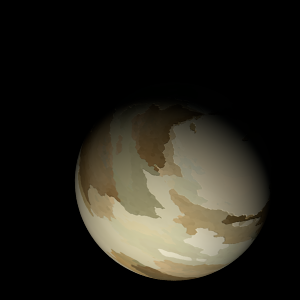|
|
Space Astro
|
Info for exoplanet "Rontea No"
| Scientific (actual) data |
|---|
| Name | Kepler-1343 b |
| Planet status | Confirmed |
| Radius | 0.172 |
| Orbital period | 3.35183 |
| Discovered | 2016 |
| Updated | 2021-02-05 |
| Tconj | 2454960 |
| Publication | Announced on a website |
| Detection type | Primary Transit |
| Alternate names | 2MASS J19371068+5043313 b, K02780.01, KIC 12164564 b, KOI-2780 b, KOI-2780.01, WISE J193710.68+504331.3 b |
| Star name | Kepler-1343 |
| Right ascension | 294.3° |
| Declination | 50.73° |
| Mag j | 14.484 |
| Mag h | 14.098 |
| Mag k | 13.989 |
| Star distance | 1307 |
| Star metallicity | -0.16 |
| Star mass | 0.95 |
| Star radius | 0.93 |
| Star age | 3.98 |
| Star temperature | 5759 |
| Star alternate names | 2MASS J19371068+5043313, KIC 12164564, KOI-2780, WISE J193710.68+504331.3 |
| Wikipedia article | Kepler-1343 b |
Back
| |
| Fictional info (?) |
|---|
| Suggested name | Rontea No |
| Planet type | Cold planet |
| challenging trip. |
| Atmosphere | Hydrogen deuteride (HD) | 67% |
| Ozone | 29% |
| Hydrogen peroxide | 2.6% |
| Atmospheric pressure | 0.27 bar |
 |
| No known satellites |
| Google search for Rontea no |
|
Website by Joachim Michaelis
|
|
|
|